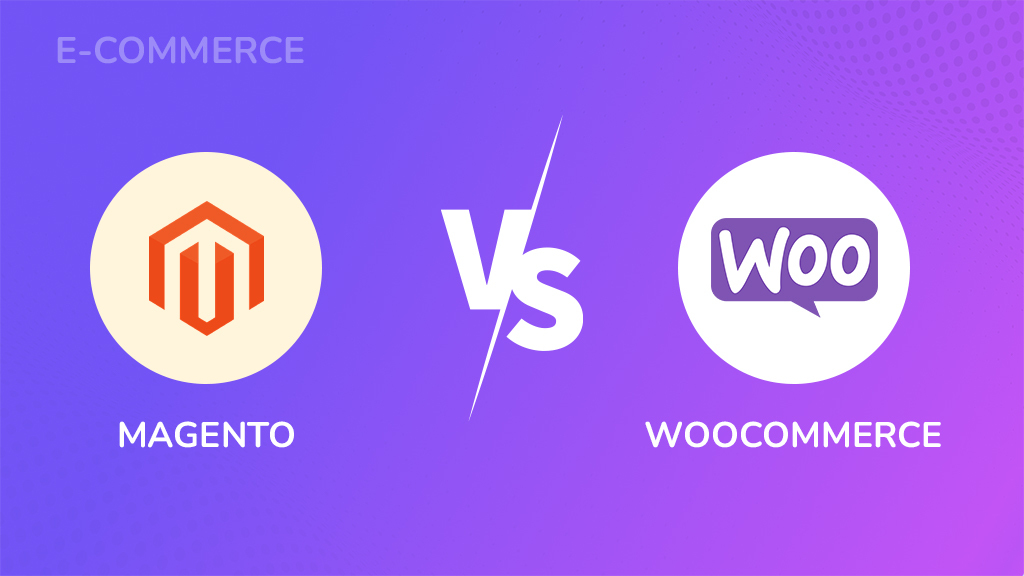
Are you aspiring to create your online empire? Search no more as dropshipping, the latest trend in e-commerce that is revolutionizing the industry in 2024, is the answer. Envision the convenience of avoiding inventory complications and establishing a successful business from your laptop, regardless of location. It may seem like a far-fetched dream, doesn’t it? However, before you plunge into the world of dropshipping, let us navigate the journey together. This comprehensive guide will serve as your roadmap on how to Start Dropshipping Business in 2024 effectively.
Table of Contents
- What exactly is Dropshipping?
- How exactly does the Dropshipping Business Model work?
- Selecting a Niche for Dropshipping Business Success
- 1. Discovering Your Passionate Focus
- 2. Conducting Comprehensive Market Research
- 3. Key Components for Analysis
- 4. Selecting Dependable Dropshipping Suppliers
- 5. Establish Your Business Brand Identity
- 6. Financial Management and Legal Considerations for Dropshipping Businesses
- 7. Unlocking the Potential of Optimization and Marketing Strategies
- Conclusion
What exactly is Dropshipping?
Dropshipping provides a unique method of order fulfillment for online retailers, allowing them to sell products without the need to hold physical inventory. Instead, this approach relies on collaboration with third-party suppliers, such as manufacturers, wholesalers, or retailers.
In this model, business owners, called “dropshippers,” focus on marketing and managing their online stores. At the same time, the responsibility of inventory management and product shipping rests solely with the supplier.
Here is a typical sequence of events in the dropshipping process:
1. Customer Purchase
A customer selects and purchases a product from the drop shipper’s online store at a predetermined retail price.
2. Order Forwarding
The drop shipper then forwards the order details to the designated supplier.
3. Payment and Profit
Based on the agreed-upon arrangement, the dropshipper pays the supplier the wholesale price for the product, while retaining the difference as their profit margin. For instance, if a customer pays $100 for an item with a wholesale price of $70, the dropshipper earns a profit of $30.
4. Fulfillment and Delivery
The supplier processes the order, packaging the product, and directly shipping it to the customer.
Dropshipping, an ever-evolving e-commerce model, thrives on a collaborative partnership between manufacturers, retailers (you), and customers. Let’s delve deeper into the distinct roles and responsibilities of each player:
How exactly does the Dropshipping Business Model work?
1. Manufacturers
i. Product Creation & Inventory Management
As the backbone of this operation, manufacturers bear the responsibility of crafting top-notch products, maintaining optimal inventory levels, and fulfilling orders placed by retailers. They handle packaging and shipping directly to customers on behalf of the retailer, ensuring a seamless product flow.
ii. Wholesale Pricing & Risk Management
Manufacturers offer their products to retailers at wholesale prices, which are significantly lower than retail prices. This enables retailers to set their profit margins. However, manufacturers also shoulder the risk of unsold inventory, necessitating meticulous forecasting and production planning.
2. Retailers (You)
i. Branding & Product Selection
As the face of your business, you curate your online store by carefully selecting products from various manufacturers that align with your brand identity and target audience. You are responsible for building and promoting your brand, ensuring an enticing customer experience.
ii. Marketing & Sales
Effective marketing strategies play a pivotal role in attracting customers and driving sales. You manage your online store, create captivating content, and utilize appropriate marketing channels to reach your target audience.
iii. Pricing & Profitability
You determine the retail prices for the products you sell, taking into account wholesale costs, marketing expenses, and desired profit margins. Striking the perfect balance between price and value is crucial for attracting and retaining customers.
iv. Customer Service
As the primary point of contact for customers, you handle inquiries, address concerns, and promptly resolve any issues that may arise during the purchase or post-purchase experience. Your dedication to exceptional customer service fosters trust and loyalty among your clientele.
Moreover, customers can rely on your customer support for any inquiries or concerns they may have. As the primary point of contact, you are responsible for addressing and resolving any issues they encounter, ensuring their satisfaction.
3. Key Benefits of Dropshipping Business
Dropshipping has emerged as a highly attractive business model in the ever-changing world of e-commerce, providing unique advantages for ambitious entrepreneurs. Let’s delve into its key benefits in detail:
i. Lower Initial Costs
One of the most enticing aspects of dropshipping is the reduced financial burden at the beginning. Unlike traditional e-commerce models, you can eliminate the need for upfront investments in product development, manufacturing, and inventory management. This indeed results in lower barriers to entry, making it easier for individuals with limited capital to launch their online businesses.
ii. Efficient Inventory Management
Dropshipping frees you from the responsibility of storing unsold inventory, which is a major source of financial risk and logistical complexity in traditional models. Instead, your suppliers handle inventory levels and manage fulfillment, ensuring that you only pay for products that are purchased by customers.
iii. Streamlined Operations
With dropshipping, you can operate with a leaner structure, eliminating the need for dedicated packing and shipping personnel. Most platforms offer automated order processing features, making fulfillment a seamless process. This allows you to focus your efforts on core areas such as marketing and customer service.
iv. Scalability and Adaptability
The inherent flexibility of dropshipping empowers you to easily expand your product offerings without incurring additional inventory-related costs. You can readily test new product lines or cater to changing customer preferences, enabling rapid adaptation and growth opportunities.
v. Global Market Reach
By partnering with dropshipping suppliers located worldwide, you can overcome geographical limitations and tap into international markets. This opens doors to a broader customer base and increases revenue potential, regardless of your physical location.

Selecting a Niche for Dropshipping Business Success
In the ever-evolving realm of e-commerce, dropshipping offers a compelling prospect for entrepreneurs. However, with nearly 30% of online stores adopting this model, competition is intense. To establish a unique position for your brand and flourish amidst the crowd, it is crucial to strategically choose your target market.
1. Discovering Your Passionate Focus
i. Commence with Self-Understanding
Delve into your interests and expertise. A niche that aligns with your passion will result in a deeper comprehension of your audience and their needs, ultimately leading to more effective marketing and product selection.
ii. Identifying Profitable Trends
Give priority to products that exhibit sustained demand, irrespective of seasonal fluctuations. Explore our carefully curated list of trending products and utilize tools such as Google Trends and Trendhunter to identify emerging markets and consumer desires.
iii. Using Amazon as a Sales Indicator
Evaluate the viability of your niche by analyzing the sales history of Amazon, the e-commerce giant. AMZScout‘s tools can assist in identifying lucrative dropshipping opportunities within established markets.
2. Conducting Comprehensive Market Research
i. Going Beyond the Surface
Move beyond initial niche identification and delve into thorough market research. This will unveil long-term projections, potential opportunities, and hidden threats that may impact your business trajectory.
ii. Estimating Revenue and Formulating Strategies
Armed with insights from market research, you can confidently project potential revenue and develop effective marketing strategies before launching your business, ensuring a more stable and successful journey.
3. Key Components for Analysis

i. Market Value and Size
Evaluate the size of the market niche, current trends, and its growth trajectory. This data will help determine if there is a sufficient customer base for your products. Tools such as Semrush can simplify this process.
ii. Understanding the Target Audience
Gain insights into the demographics of the niche, including age range, gender, income level, hobbies, and occupations. Furthermore, this information forms the foundation for effective branding that resonates with your ideal customers.
iii. Analyzing Buying Behavior
Examine the factors that influence purchase decisions and frequency within your chosen niche. This understanding will guide your marketing and pricing strategies, ensuring they meet the expectations of your target audience.
iv. Identifying Key Competitors
Utilize tools like Similarweb to identify established players in your chosen market. By analyzing their strengths, weaknesses, and market gaps, you can discover opportunities for differentiation and establish a unique position for your brand.
4. Selecting Dependable Dropshipping Suppliers
Choosing trustworthy and compatible dropshipping suppliers is a critical step in establishing a successful e-commerce venture. These partners not only provide the products your customers want but also ensure smooth delivery and overall customer satisfaction.
i. Streamlining the Search for Suppliers
- Utilizing Dedicated Platforms
Streamlined supplier directories offered by dropshipping platforms such as Doba, SaleHoo, AliDropship, and Wholesale2B can help you efficiently identify potential partners. Additionally, companies like Printful and Printify cater to print-on-demand needs, expanding your range of products.
ii. Conducting Thorough Research
- Verifying Legitimacy and Reputation
It is important to thoroughly vet potential suppliers. Examine their client list, request business licenses, and explore online reviews to determine their legal status and service quality. Moreover taking a cautious approach can help you avoid fraudulent partnerships.
- Considering Minimum Order Quantity and Costs
Carefully evaluate the minimum order quantity requirements set by different suppliers. While bulk purchases often result in lower costs per unit, make sure these quantities align with your projected demand and cash flow.
- Taking Hidden Fees into Account
Look beyond the base wholesale price and consider potential additional costs such as monthly subscriptions, packaging charges, handling fees, and refund processing expenses. It is recommended to maintain a profit margin of 20-40% after accounting for all these factors for sustainable business growth.
- Assessing Customer Service Efficiency
Evaluate the supplier’s customer support channels to ensure they are responsive and capable of handling customer inquiries or complaints. Above all customer service is crucial for maintaining a positive brand image and fostering customer loyalty.
- Assessing Product Quality and Delivery
To evaluate the quality of products and packaging standards, it is recommended to conduct a sample order. This will allow you to personally assess the product quality and make informed decisions. By comparing products from different suppliers, you can identify partners who consistently meet your quality expectations.
- Evaluating Order Fulfillment Capabilities
When assessing suppliers, it is crucial to pay close attention to their order processing and delivery timelines. This will help you determine their efficiency in fulfilling orders. Additionally, it is advisable to prioritize partners who have effective return-handling mechanisms in place. This will minimize customer inconvenience and ensure smooth business operations.
iii. Compatibility with Website Tools
If you are using a specific website builder or content management system, it is worth exploring dropshipping platforms that offer extensions or plugins. Hence these tools can seamlessly integrate with your existing system, allowing for easy product import and management. By streamlining your inventory management and product listing processes, you can enhance efficiency and productivity.
iv. Formalizing the Partnership
To establish a lasting partnership, it is advisable to create a dropshipping agreement contract. This formal document acts as a legal framework that outlines important elements of your business arrangement, such as wholesale pricing, delivery standards, return policies, procedures for handling damaged items, and other relevant details. By clearly defining expectations and responsibilities from the beginning, you can lay the foundation for a mutually advantageous and enduring collaboration with your dropshipping suppliers.
5. Establish Your Business Brand Identity
In addition to selecting a niche, creating a strong brand can differentiate your business from competitors. The more distinctive your branding is, the more likely your target audience will remember and choose to purchase from you.
To begin building your brand, our comprehensive guide can provide valuable assistance. For a dropshipping business, the following steps are crucial:
i. Determine your Brand Positioning
Identify the unique value or feature that sets your business apart from similar brands. Emphasize this element consistently in all your marketing and branding endeavors.
ii. Develop a Memorable Business Name
Choose a name that is easy to pronounce and type, as users are more likely to remember such names. If you require assistance, an AI tool can generate numerous business name ideas for your consideration.
iii. Establish a Visually Appealing Brand Identity
Select an aesthetically pleasing color palette, that complements your business and resonates with your target audience. Our website color scheme guide can inspire.
iv. Choose Fonts that are Distinctive and Easy to Read
For your logo, opt for a unique typeface that effectively conveys your brand identity. On the other hand, select a more familiar and legible font for web content, social media visuals, email newsletters, and other materials.
v. Design a Simple yet Attention-Grabbing Logo
Ensure that your logo represents what your business sells and stands for. Henceforth it should be easily recognizable and leave a lasting impression on viewers.
6. Financial Management and Legal Considerations for Dropshipping Businesses
To ensure the success of your dropshipping business, it is crucial to have a solid grasp of financial management and legal compliance. Here are some essential steps to follow:
i. Separate Business and Personal Finances
Maintain separate accounts for your business and personal finances. This will make bookkeeping easier, simplify tax filing, and protect your assets in case of any legal issues. Seek advice from a local financial advisor to ensure you have the right account types and structures for your specific region.
ii. Establish a Business Bank Account
Open a dedicated bank account under your dropshipping brand name. This account should be used exclusively for business transactions, such as receiving customer payments and paying suppliers. Having a separate account will help you keep track of your business finances more efficiently.
iii. Obtain a Resale Certificate
Depending on your location, you may need a resale certificate to legally sell products from other businesses. Research the regulations set by your local government to determine if this requirement applies to you. If necessary, obtain the required certificate to ensure compliance.
iv. Understand Sales Tax Nexus
Familiarize yourself with the sales tax nexus regulations in your area, as well as those of your suppliers. This knowledge will particularly guide your pricing strategy, as you may be required to collect and remit sales tax based on your location and customer base. Stay informed to avoid any potential legal issues.
v. Budget for Maintenance and Growth
When setting your budget and pricing your products, consider factors such as platform fees, marketing costs, and other recurring expenses. By including these expenses in your budget, you can ensure that you have enough resources to sustain your business operations and support future growth.
By following these financial management and legal considerations, you can establish a strong foundation for your dropshipping business and navigate potential challenges with confidence.
7. Unlocking the Potential of Optimization and Marketing Strategies
Now that your online store is up and running and you have laid the necessary legal foundations, it’s time to maximize your business potential through effective marketing and optimization techniques. By utilizing the various digital channels available, you can attract more customers, increase website traffic, and propel your dropshipping venture towards sustainable growth.
Harnessing the Power of Digital Marketing
i. Search Engine Optimization (SEO)
Improve your website’s visibility on search engine results pages (SERPs) by implementing SEO best practices. Take advantage of tools like Website Builder’s built-in SEO features to optimize your website content and attract organic traffic.
ii. Content Marketing
Create engaging blog posts, listicles, or informative how-to guides that highlight the value of your products to your target audience. This surely establishes your brand as a reliable resource and encourages customer engagement.
iii. Email Marketing
Build a strong email list explicitly by offering exclusive discounts to subscribers. Regularly communicate with your audience by providing updates on new products, exciting offers, and valuable content. This indeed helps foster brand loyalty and drives sales.
iv. Social Media Marketing
Utilize visually appealing platforms such as Instagram and YouTube to showcase your products and connect with potential customers. Take inspiration from successful dropshipping brands like Notebook Therapy, who effectively utilize social media for impactful marketing.
v. Referral Marketing
Once you have a solid customer base, implement referral programs to incentivize existing customers to share your products with their network. Offer attractive commissions (typically 10-20%) for successful referrals, which will generate organic customer acquisition and increase brand awareness.
vi. Affiliate Marketing
Collaborate with relevant content creators to promote your products and tap into their established audiences. Similar to referral marketing, this strategy involves commission-based rewards, often at higher rates. In general, it can be a powerful tool for reaching wider customer segments.
Overall by implementing these optimization and marketing strategies, you can effectively promote your dropshipping business, attract more customers, and achieve sustainable growth in the online marketplace.
Conclusion
After acquiring the knowledge, successfully following the necessary steps, and uncovering the hidden techniques to commence your desired dropshipping business in 2024, you have reached more than just a mere conclusion. It indeed serves as a launching pad that will thrust you into the exhilarating realm of e-commerce. Always bear in mind that this expedition is a long-term endeavor, not a quick race. Maintain your patience, perseverance, and continuous learning. In fact, Embracing the obstacles is a chance to enhance your approach and sharpen your abilities.









